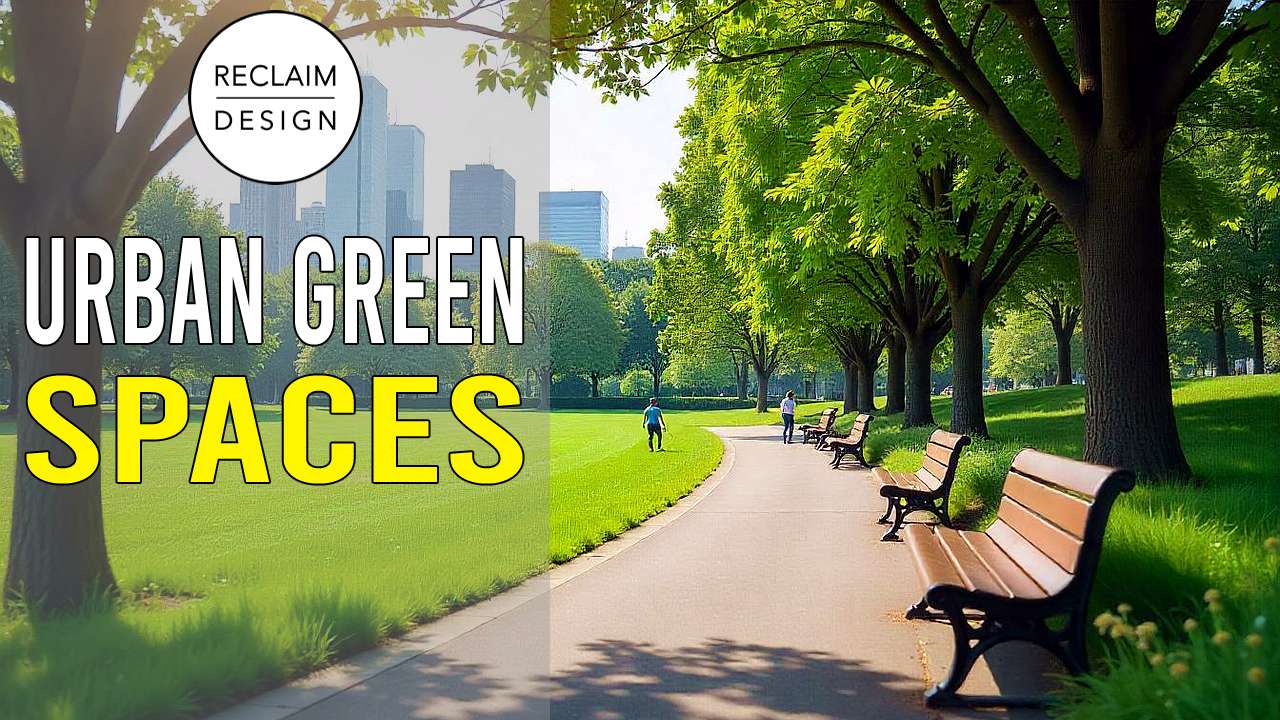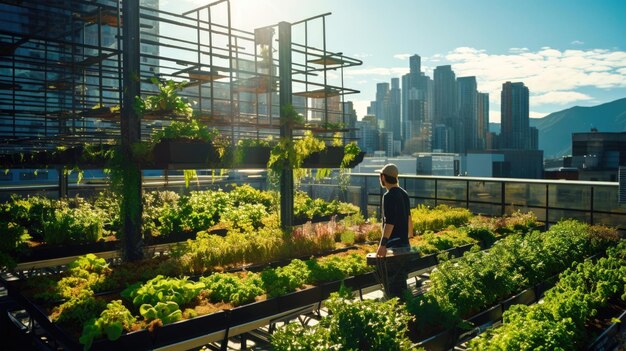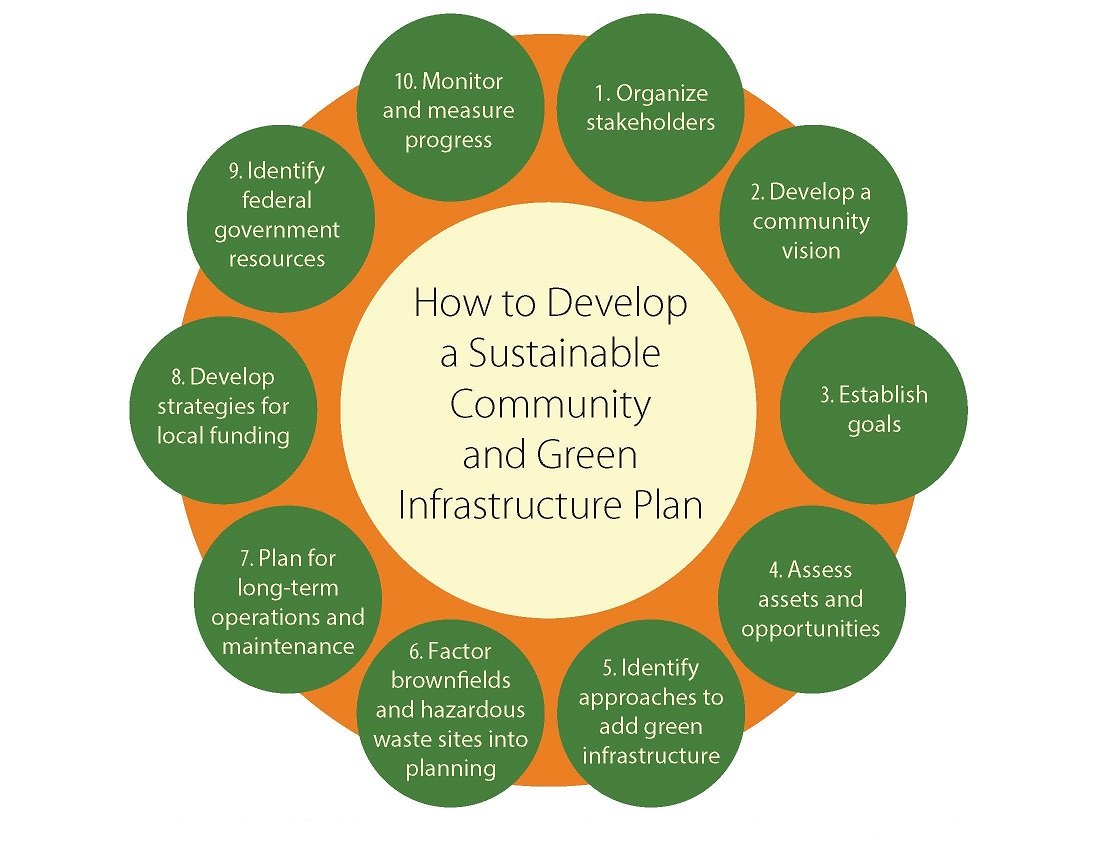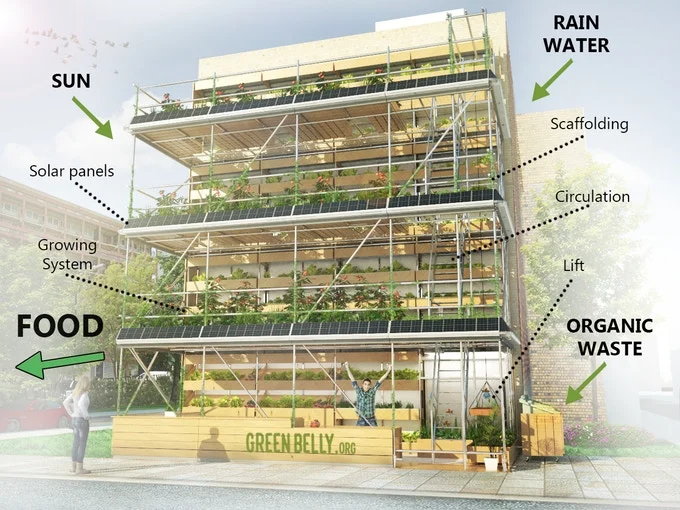The world is changing, and with it, our approach to building design and urban planning. We’re no longer just building structures; we’re crafting ecosystems. And at the forefront of this transformation is the remarkable technology of sustainable green roofs. These aren’t just rooftops with plants; they are vibrant, living systems that offer a multitude of benefits, from environmental to economic, and even psychological. Let’s dive deep into the world of green roofs, exploring their potential and how they are reshaping our cities and our future.
What Exactly is a Green Roof?
At its core, a green roof, also known as a vegetated roof or living roof, is a roof of a building that is partially or completely covered with vegetation and a growing medium, planted over a waterproofing membrane. Unlike traditional roofs, which are typically made of asphalt, tiles, or concrete, green roofs incorporate layers of plants, soil, drainage, and filtration systems. This design transforms a passive surface into an active, living ecosystem.
Think of it like this: instead of a barren expanse, you have a thriving garden, an urban oasis, right on top of your building. This seemingly simple concept has profound implications for the environment, human well-being, and the sustainability of our built environment.
Types of Green Roofs: A Spectrum of Possibilities
Green roofs aren’t a one-size-fits-all solution. They come in various types, each designed to meet specific needs and conditions. Understanding the different types is crucial for selecting the right system for your project.
Extensive Green Roofs: The Lightweight Champions
Extensive green roofs are characterized by their lightweight nature and shallow growing medium. They typically feature low-growing, drought-tolerant plants like sedums, mosses, and herbs. These roofs require minimal maintenance and are ideal for large-scale applications, such as commercial buildings and warehouses. They are relatively easy to install and require less structural support compared to other types. The primary focus is on environmental benefits, such as stormwater management and habitat creation.
Intensive Green Roofs: The Urban Gardens
Intensive green roofs are essentially rooftop gardens. They feature a deeper growing medium, allowing for a wider variety of plants, including shrubs, trees, and even small lawns. These roofs require more intensive maintenance, including irrigation, fertilization, and pruning. They offer a higher aesthetic value and can provide recreational spaces, such as parks and patios. However, intensive green roofs are heavier and require more robust structural support.
Semi-Intensive Green Roofs: The Hybrid Approach
As the name suggests, semi-intensive green roofs combine the characteristics of both extensive and intensive systems. They typically feature a moderate growing medium depth and a mix of plant species. This type offers a balance between aesthetic appeal, environmental benefits, and maintenance requirements. They can be a good option for projects where a balance between functionality and visual impact is desired.
The Components of a Green Roof: A Layered Symphony
A green roof is more than just plants on a roof; it’s a carefully engineered system composed of several layers, each playing a vital role in its functionality and longevity. Here’s a breakdown of the key components:
- Waterproofing Membrane: This is the foundation of the green roof, preventing water from penetrating the roof structure and causing damage. It must be durable, resistant to root penetration, and able to withstand the stresses of weather and time.
- Root Barrier: This layer protects the waterproofing membrane from root penetration, preventing damage and ensuring the longevity of the roof.
- Drainage Layer: This crucial component allows excess water to drain away from the growing medium, preventing waterlogging and ensuring the health of the plants. It can be made of various materials, such as gravel, drainage mats, or prefabricated drainage boards.
- Filter Fabric: This layer prevents the growing medium from clogging the drainage layer, ensuring proper water flow and preventing potential problems.
- Growing Medium: This is the soil or substrate in which the plants grow. It’s specifically designed for green roofs, providing the necessary nutrients, drainage, and aeration. It’s usually a lightweight mix of materials like compost, perlite, and lava rock.
- Plants: The heart of the green roof, the plants are selected based on their adaptability to the local climate, their aesthetic appeal, and their ability to thrive in the specific growing medium.
The Benefits of Green Roofs: A Multifaceted Approach
The advantages of green roofs extend far beyond aesthetics. They offer a wide array of benefits, making them a valuable investment for building owners, communities, and the environment.
Environmental Benefits: A Breath of Fresh Air
- Stormwater Management: Green roofs absorb rainwater, reducing runoff and the strain on drainage systems. They can significantly reduce the risk of flooding and erosion.
- Improved Air Quality: Plants absorb pollutants, improving air quality and reducing the effects of the urban heat island effect.
- Reduced Urban Heat Island Effect: Green roofs help cool down buildings, reducing the need for air conditioning and lowering energy consumption.
- Habitat Creation: Green roofs provide habitats for birds, insects, and other wildlife, increasing biodiversity in urban areas.
- Carbon Sequestration: Plants absorb carbon dioxide from the atmosphere, helping to mitigate climate change.
Economic Benefits: Investing in the Future
- Energy Savings: Green roofs act as insulation, reducing energy consumption for heating and cooling.
- Increased Property Value: Green roofs can enhance the aesthetic appeal of a building, increasing its market value.
- Extended Roof Lifespan: Green roofs protect the underlying roof membrane from UV radiation and temperature fluctuations, extending its lifespan.
- Potential Tax Incentives and Rebates: Many cities and municipalities offer financial incentives for installing green roofs.
Social and Psychological Benefits: Enhancing Well-being
- Improved Aesthetics: Green roofs create visually appealing spaces, enhancing the beauty of urban environments.
- Increased Biodiversity: Green roofs attract birds, insects, and other wildlife, bringing nature closer to urban residents.
- Reduced Stress and Improved Mental Health: Studies have shown that exposure to nature can reduce stress and improve mental well-being.
- Recreational Opportunities: Intensive green roofs can provide recreational spaces, such as parks and patios.
Green Roof Technology: Innovation at its Finest
The technology behind green roofs is constantly evolving, with ongoing innovations that improve their performance, sustainability, and affordability.
Advanced Drainage Systems
New drainage systems are being developed to optimize water management and aeration. These systems are designed to efficiently remove excess water while ensuring adequate moisture for plant growth.
Lightweight Growing Mediums
Researchers are developing lighter and more sustainable growing mediums using recycled materials and innovative formulations. These mediums reduce the overall weight of the green roof and improve its environmental footprint.
Smart Irrigation Systems
Smart irrigation systems use sensors and data analytics to optimize water usage. These systems monitor soil moisture levels and plant needs, ensuring efficient water delivery and preventing overwatering.
Modular Green Roof Systems
Modular systems offer a pre-planted, easy-to-install solution for green roofs. These systems are often designed for quick installation and can be customized to meet specific needs.
Plant Selection and Breeding
Scientists are studying plant species that are best suited for green roofs, focusing on drought tolerance, pest resistance, and aesthetic appeal. They are also developing new plant varieties that are specifically adapted to the harsh conditions of a rooftop environment.
Designing and Installing a Green Roof: A Step-by-Step Guide
Installing a green roof is a complex process that requires careful planning and execution. Here’s a general overview of the steps involved:
- Assessment: Evaluate the structural integrity of the roof, considering its load-bearing capacity and compatibility with green roof systems.
- Design: Develop a detailed design plan, including plant selection, drainage systems, and irrigation requirements.
- Waterproofing: Install a high-quality waterproofing membrane to protect the roof structure from water damage.
- Root Barrier: Install a root barrier to prevent root penetration into the waterproofing membrane.
- Drainage Layer: Install a drainage layer to ensure proper water flow and prevent waterlogging.
- Filter Fabric: Install a filter fabric to prevent the growing medium from clogging the drainage layer.
- Growing Medium: Spread the growing medium evenly across the roof surface.
- Planting: Plant the selected vegetation, ensuring proper spacing and planting techniques.
- Irrigation: Install an irrigation system, if required, to provide adequate water to the plants.
- Maintenance: Implement a regular maintenance plan, including watering, fertilization, weeding, and pruning.
Choosing the Right Plants for Your Green Roof
Plant selection is a critical aspect of a successful green roof. The choice of plants depends on several factors, including climate, sun exposure, and desired aesthetic. Here are some common plant categories and their characteristics:
- Sedums: These succulent plants are drought-tolerant and require minimal maintenance, making them ideal for extensive green roofs. They come in various colors and textures, adding visual interest to the roof.
- Grasses: Ornamental grasses add texture and movement to the roof. They are relatively low-maintenance and can tolerate a range of conditions.
- Herbs: Herbs such as thyme, oregano, and chives can thrive on green roofs, providing a fragrant and edible element.
- Wildflowers: Wildflowers attract pollinators and add a touch of natural beauty to the roof. They require minimal care and can thrive in various conditions.
- Shrubs and Trees: For intensive green roofs, shrubs and trees can be incorporated, providing shade and creating a more diverse ecosystem.
Maintenance of Green Roofs: Keeping it Thriving
Regular maintenance is essential for the long-term health and performance of a green roof. Here are some key maintenance tasks:
- Watering: Water the plants regularly, especially during dry periods. The frequency of watering depends on the plant species and climate conditions.
- Fertilization: Fertilize the plants as needed, following the recommendations of the growing medium supplier.
- Weeding: Remove weeds regularly to prevent them from competing with the desired plants.
- Pruning: Prune the plants as needed to maintain their shape and promote healthy growth.
- Inspection: Inspect the roof regularly for any signs of damage or problems, such as leaks or plant diseases.
- Drainage Maintenance: Ensure that the drainage system is functioning properly, removing any debris that may be blocking the flow of water.
Green Roofs in Action: Real-World Examples
Green roofs are being implemented in a wide range of projects around the world, from residential buildings to commercial complexes. Here are a few inspiring examples:
- The Vancouver Convention Centre: This iconic building features a massive green roof, providing habitat for local wildlife and reducing stormwater runoff.
- The Ford Rouge Plant: This manufacturing plant in Michigan features a green roof that helps manage stormwater and improve air quality.
- The California Academy of Sciences: This museum in San Francisco features a living roof that provides insulation, reduces energy consumption, and serves as a research platform.
- Numerous Residential Buildings: Homeowners are increasingly adopting green roofs to enhance their properties, reduce energy costs, and create a more sustainable lifestyle.
The Future of Green Roofs: A Growing Trend
The popularity of green roofs is on the rise, driven by increasing awareness of their environmental, economic, and social benefits. As cities become denser and the need for sustainable solutions grows, green roofs are expected to play an increasingly important role in urban planning and building design. The future looks bright for this innovative technology, with further advancements anticipated in materials, design, and implementation. Continued research and development will lead to even more efficient, cost-effective, and aesthetically pleasing green roof systems.
Green roof technology is no longer a niche concept; it’s a vital component of a sustainable future. By embracing this technology, we can create more livable, resilient, and environmentally friendly cities for generations to come. The green roof revolution is here, and it’s transforming the way we build and interact with our environment, one rooftop at a time.
Addressing Common Concerns and Challenges
While green roofs offer numerous benefits, it’s important to acknowledge some of the common concerns and challenges associated with their implementation.
- Cost: The initial cost of installing a green roof can be higher than that of a conventional roof. However, the long-term benefits, such as energy savings and extended roof lifespan, can offset this cost over time.
- Weight: Green roofs add weight to the roof structure, requiring careful assessment of the building’s load-bearing capacity. Professional engineering expertise is crucial to ensure structural safety.
- Maintenance: Green roofs require regular maintenance, including watering, fertilization, and weeding. However, the maintenance requirements are often lower than those of traditional gardens.
- Watering: Depending on the climate, irrigation may be necessary to ensure the plants thrive. This can add to the operational costs and water consumption.
- Accessibility: Access to the roof for maintenance and inspection can be challenging, depending on the building design.
Overcoming these challenges requires careful planning, professional expertise, and a commitment to sustainable practices. The benefits of green roofs far outweigh the challenges, making them a worthwhile investment.
Green Roofs and the Circular Economy
Green roof technology aligns perfectly with the principles of the circular economy. By using recycled materials in the growing medium, reducing waste through stormwater management, and extending the lifespan of the roof, green roofs contribute to a more sustainable and resource-efficient approach to building design. They promote a closed-loop system where materials are reused and repurposed, minimizing waste and maximizing resource utilization.
The Role of Government and Policy in Green Roof Adoption
Government policies and incentives play a significant role in promoting the adoption of green roofs. Many cities and municipalities offer tax credits, rebates, and other financial incentives to encourage the installation of green roofs. Building codes and regulations are also evolving to incorporate green roof requirements, particularly in new construction projects. These policies help to create a supportive environment for green roof development and accelerate the transition to more sustainable building practices.
Educating the Public and Promoting Green Roof Awareness
Raising public awareness about the benefits of green roofs is essential for driving their widespread adoption. Educational programs, workshops, and outreach campaigns can help to inform building owners, developers, and the general public about the advantages of green roofs. Showcasing successful green roof projects and sharing best practices can inspire others to embrace this innovative technology. Collaboration between government agencies, industry organizations, and educational institutions is crucial to promote green roof awareness and accelerate the transition to a more sustainable built environment.
Conclusion: Embracing the Green Roof Revolution
Sustainable green roof technology offers a powerful solution for creating more sustainable, resilient, and livable cities. From stormwater management to energy savings and habitat creation, green roofs provide a wide range of benefits. By embracing this technology, we can transform our buildings into active ecosystems, enhancing the health of our communities and protecting the environment. The future of urban development is green, and green roofs are leading the way. As technology advances and awareness grows, we can expect to see even more innovative and impactful green roof applications in the years to come. The time to embrace the green roof revolution is now, and together, we can build a more sustainable future, one roof at a time.



